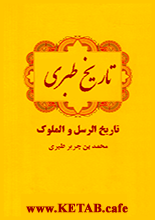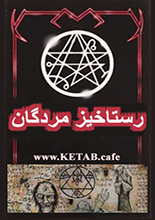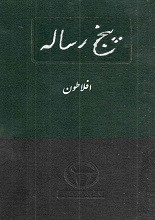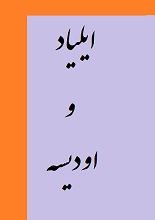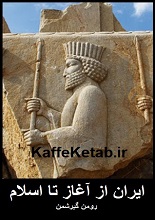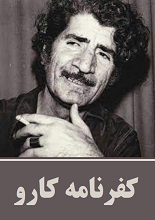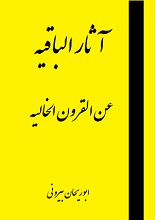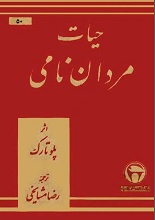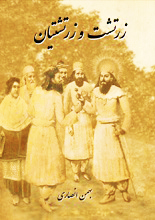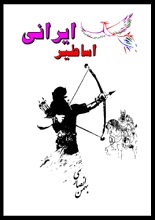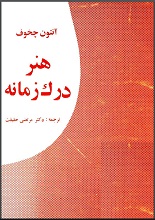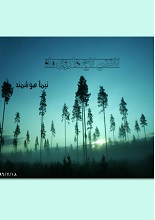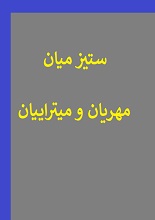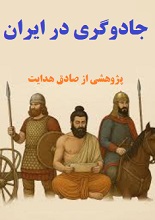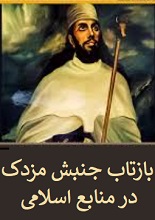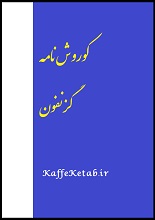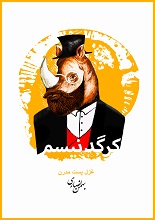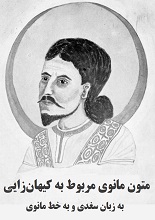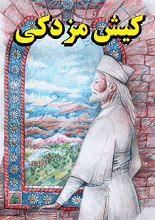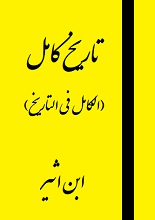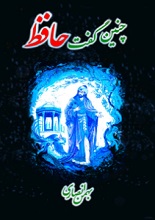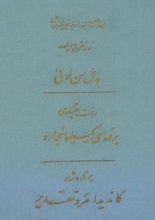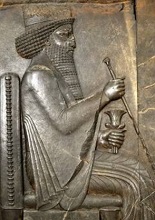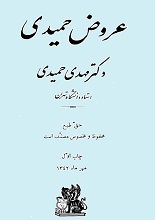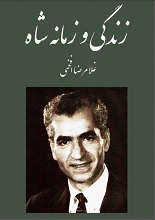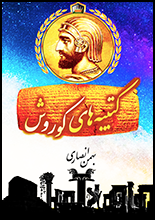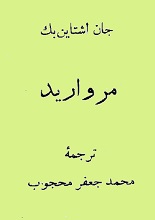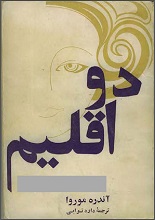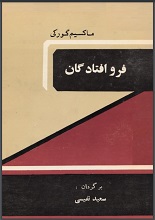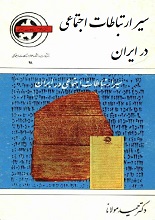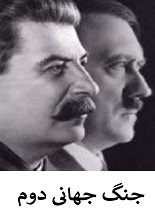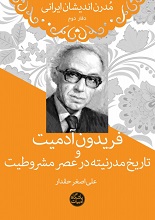Among the most influential works ever written on the history of ancient Iran, From Cyrus to Alexander: A History of the Persian Empire by Pierre Briant stands as a monumental achievement in historical scholarship. First published in French as Histoire de l’Empire Perse: De Cyrus à Alexandre and later translated into English by Peter T. Daniels, this 1,200-page volume reshaped modern understanding of the Achaemenid Empire—the first great Persian Empire and one of the most powerful civilizations of antiquity.
Briant’s masterpiece is not merely a chronological narrative of Persian rulers; it is an exhaustive, interdisciplinary study of how the Achaemenid Empire functioned—its administration, economy, religion, military, art, and ideology. The book bridges the gap between archaeology, philology, and history, correcting centuries of misinterpretation rooted in Greek-centric sources. For readers, it offers a panoramic and richly detailed exploration of how the Persians, from Cyrus the Great to Darius III, created and governed one of the most sophisticated empires the world had ever seen.
A Scholarly Revolution in Understanding the Persian Empire
Pierre Briant, one of the most distinguished historians of the ancient Near East, devoted decades of research to studying the Achaemenid world. When From Cyrus to Alexander was first released, it represented a decisive turning point in Persian studies. Prior to Briant, the dominant narrative of Persian history had been filtered through the eyes of Greek historians such as Herodotus, Xenophon, and later Roman commentators, many of whom viewed the Persians as despotic “others” in contrast to the “civilized” Greeks.
Briant’s mission was to reconstruct Persian history from the inside out—to understand the empire on its own terms, using Persian inscriptions, Babylonian chronicles, Elamite tablets, archaeological data, and administrative documents from Persepolis. This shift in perspective allowed him to portray the Achaemenid Empire not as a monolithic tyranny, but as a remarkably adaptive, multicultural state built on pragmatic governance and tolerance.
The result is a comprehensive, deeply human portrait of an empire that stretched from the Aegean Sea to the Indus River and from the Caucasus to the Nile.
The Vision of Cyrus the Great
The book opens with Cyrus II, known to history as Cyrus the Great (ca. 559–530 BCE), founder of the Achaemenid dynasty. Briant devotes significant attention to Cyrus’s unique style of kingship, which combined military genius with political wisdom. Unlike conquerors who ruled through fear, Cyrus established his legitimacy through inclusion and respect for local traditions.
Using Babylonian and biblical sources, Briant demonstrates how Cyrus’s conquest of Babylon in 539 BCE marked not only a military triumph but also a moral one. His famous “Cyrus Cylinder”—often hailed as the world’s first declaration of human rights—reveals his policy of repatriating displaced peoples and restoring local cults. This humane and visionary approach laid the ideological foundation for what would become one of history’s most enduring empires.
Cyrus’s reign also introduced a new model of imperial organization. Briant explains how the early Achaemenid state balanced central authority with local autonomy, creating a system of satrapies (provinces) governed by local elites loyal to the crown. This administrative model would influence empires from Rome to the Ottomans.
Cambyses, Darius, and the Institutionalization of Empire
After Cyrus’s death, his son Cambyses II expanded Persian dominion into Egypt. Briant explores this reign not through the Greek caricature of Cambyses as a mad despot but through archaeological and administrative evidence showing a capable ruler managing a vast, diverse empire.
Yet it was Darius I (522–486 BCE) who truly institutionalized the empire. Briant devotes a large portion of the book to Darius’s reforms: the reorganization of satrapies, the creation of royal roads, standardized coinage, and monumental architecture. Under Darius, Persepolis emerged as both a political center and a symbolic statement of imperial unity.
Darius’s inscriptions—particularly the Behistun inscription—provide critical insight into his conception of kingship and divine legitimacy. Briant interprets these texts as expressions of both propaganda and genuine ideology: the king as the chosen of Ahura Mazda, ruling through justice and order (arta). This moral-political ideal shaped the entire Achaemenid worldview.
The Economy and Administration of a Multicultural Empire
Unlike many traditional historians who focus solely on military conquests, Briant dedicates vast sections to the inner workings of the Persian administration. Drawing on the Persepolis Fortification Tablets, he reconstructs the mechanisms of taxation, tribute, labor, and resource management that allowed the empire to sustain itself across continents.
The Achaemenid economy, as described in the book, was a complex, interconnected system based on agricultural production, long-distance trade, and centralized redistribution. Gold from Lydia, grain from Egypt, timber from Lebanon, and horses from Central Asia all flowed through a bureaucratic network that was both efficient and flexible.
Briant emphasizes that the empire’s strength lay not in oppression but in negotiation. Local elites retained authority as long as they remained loyal to the king, and cultural diversity was not suppressed but integrated into the imperial framework. Temples and sanctuaries across the empire continued to operate, receiving royal patronage regardless of faith—a policy that fostered relative peace across diverse populations.
The Persian Army and the Art of Imperial Control
Another significant aspect of Briant’s analysis is his treatment of the Persian military. Rather than glorifying battle, he examines how the Persians organized, financed, and deployed their armies to maintain order across an immense realm.
The Persian army, Briant notes, was not a standing national army but a coalition of ethnically diverse contingents—from Median cavalry to Greek mercenaries, Indian archers, and Egyptian marines. This diversity mirrored the empire itself and reflected the Achaemenid strategy of inclusion.
Through his detailed examination of campaigns—from Cyrus’s conquests to Xerxes’ invasion of Greece—Briant dismantles simplistic stereotypes of Persian “decadence.” He portrays instead a pragmatic, resourceful empire capable of enormous logistical achievements, including the construction of bridges, canals, and supply networks that rival modern systems of military engineering.
Religion, Ideology, and the King’s Role
In the Achaemenid worldview, politics and religion were deeply intertwined. Briant dedicates an entire section to the relationship between royal ideology and Zoroastrian concepts of order (asha).
While avoiding anachronistic assumptions, he carefully interprets the inscriptions and archaeological evidence to show that Persian kings saw themselves as agents of cosmic harmony. Ahura Mazda was invoked not merely as a god of light but as the divine guarantor of justice and stability.
This moral vision, Briant argues, was more than religious rhetoric; it was a guiding principle for governance. The king’s duty was to maintain arta (truth and order) against druj (lie and chaos)—a theme that echoes through Persian art, ritual, and even architecture.
Greek Encounters and Cultural Exchange
A major contribution of From Cyrus to Alexander is its balanced treatment of the Greco-Persian relationship. Rather than framing it as a clash of civilizations, Briant views it as a dialogue—sometimes violent, often reciprocal.
He argues that Greek sources, while invaluable, reflect their own political and ideological agendas. By juxtaposing them with Persian and Babylonian data, Briant reconstructs a more nuanced picture of interaction. Trade, diplomacy, and artistic influence flowed both ways. Greek artisans worked in Persepolis; Persian luxury goods appeared in Athens; and philosophical ideas about kingship and divinity crossed cultural boundaries.
Briant’s reinterpretation of the so-called “Persian Wars” is particularly striking. He shifts the focus from Greek heroism to the broader geopolitical context, emphasizing that for the Persians, the wars with Greece were peripheral skirmishes compared to the vast challenges of governing a world empire.
Art, Architecture, and the Aesthetic of Power
One of the most captivating dimensions of From Cyrus to Alexander is Briant’s exploration of Achaemenid art and architecture as instruments of imperial ideology. For him, the palaces of Persepolis, Susa, and Pasargadae are not mere archaeological remains—they are visual manifestos of a political vision.
Briant approaches these sites as living documents that communicate royal messages through scale, symmetry, and symbolism. The immense stairways, processional reliefs, and columned halls of Persepolis express the universality of empire. Delegations from all nations, carved on the Apadana reliefs, approach the king in orderly procession, each bringing gifts from their land. These images, Briant argues, were not meant to glorify conquest but to celebrate harmony under Persian rule.
He pays equal attention to artistic synthesis. Persian architects blended Mesopotamian, Median, and Ionian elements into a new aesthetic language. Columns derived from Greek prototypes support lintels carved in the style of Assyrian palaces, while lotus and palm motifs echo Egyptian symbolism. This hybrid visual culture embodied the empire’s cosmopolitan spirit—it was both Iranian and international.
Even the layout of the royal complexes mirrored the ideological structure of the empire: a central authority surrounded by diverse but integrated peripheries. The spaces of audience, ceremony, and administration reflected the king’s dual role as both divine representative and pragmatic ruler.
Cultural Administration and Imperial Communication
Another crucial theme in Briant’s work is the communication infrastructure that held the Persian world together. He dedicates entire sections to the Royal Road, an extensive network stretching from Sardis to Susa. Couriers could cover its 2,700 kilometers in less than two weeks—an extraordinary logistical achievement that astonished Herodotus himself.
Through these routes, messages, edicts, and economic goods circulated swiftly, allowing the king to maintain control and presence even in distant provinces. Briant interprets this not as mechanical bureaucracy but as an early form of political intelligence. The empire’s cohesion depended on reliable information flow, cultural translation, and mutual recognition between center and periphery.
He also highlights the linguistic pluralism of the Achaemenid court. Aramaic served as a lingua franca, while Old Persian, Elamite, and Babylonian coexisted in inscriptions and administration. This deliberate multilingualism demonstrated imperial inclusivity: no single culture dominated, and every major region found its voice within the imperial framework.
Daily Life and the Social Order
Moving beyond the palaces and inscriptions, Briant delves into the social realities of the empire. He reconstructs the lives of workers, craftsmen, priests, and women using data from the Persepolis Fortification Tablets and other administrative records. These documents—thousands of clay tablets—offer unprecedented insight into how ordinary people participated in and benefited from the imperial system.
Workers received rations of barley, wine, and beer; families traveled together on royal assignments; and women, including royal mothers and wives, managed estates and distributed pay. Contrary to older assumptions of absolute monarchy, Briant’s analysis reveals a complex, stratified society in which the state ensured both hierarchy and stability.
Economically, the Achaemenid Empire operated as a redistributive system. Tribute from provinces was not simply hoarded in the royal treasury but reallocated for public works, festivals, and salaries. Briant’s portrait of the Persian state is thus dynamic, neither exploitative nor utopian but administratively sophisticated and morally conscious of balance.
The Decline of the Achaemenid Order
No empire, however vast, is immune to entropy. In later chapters, Briant traces the gradual erosion of Achaemenid authority in the fourth century BCE. Internal rivalries, local revolts, and fiscal strains weakened the imperial structure long before Alexander appeared on the horizon.
He interprets the reigns of Artaxerxes II and Artaxerxes III as periods of both reform and decay. The court became increasingly ceremonial; satraps asserted semi-independent power; and mercenary forces replaced traditional levies. Yet Briant resists the romantic narrative of moral decline. Instead, he presents the late empire as an evolving political organism—still formidable, still adaptive, but burdened by its own vastness.
By situating Persian “decline” within its administrative context, he transforms what used to be a tragic finale into a nuanced study of imperial sustainability.
Alexander’s Conquest and the Transformation of Empire
The final chapters—some of the most remarkable in the book—recount Alexander the Great’s invasion not as the inevitable triumph of Hellenism over barbarism, but as the culmination of centuries of imperial exchange.
Briant challenges the triumphalist tone of classical historiography. He argues that Alexander’s success was possible precisely because he inherited and exploited the Persian imperial infrastructure: its roads, its administration, its multicultural diplomacy. Alexander did not destroy the Achaemenid Empire—he absorbed it.
In this reinterpretation, the conquest becomes less about the victory of Greece and more about the continuity of empire. Many Persian satraps retained their posts under Macedonian rule; Persian customs persisted; and Alexander himself adopted Achaemenid dress and rituals. Briant concludes that the “Persian model” of governance survived well into the Hellenistic world, shaping Seleucid and even Roman administrative thought.
This perspective not only humanizes Alexander’s opponents but also restores the Achaemenids to their rightful place as architects of the first truly global state.
The Book’s Structure and Scholarly Depth
From Cyrus to Alexander is organized into thematic and chronological sections, blending narrative with analysis. Each chapter opens with historical context, then delves into administrative, economic, or cultural aspects, before connecting them to broader interpretive questions.
Briant’s method combines philological precision with comparative history. He cross-references Greek, Babylonian, Elamite, and Persian sources to test their reliability. This meticulous approach yields a layered, almost archaeological reading of the past. His footnotes—often miniature essays in themselves—guide readers through debates on chronology, terminology, and historiography.
The book’s English translation by Peter T. Daniels retains Briant’s scholarly rigor while making the dense French prose accessible to Anglophone readers. The result is both academically invaluable and surprisingly readable, appealing to historians, students, and anyone fascinated by ancient civilizations.
The Legacy of Pierre Briant’s Vision
The impact of Briant’s scholarship has been immense. From Cyrus to Alexander redefined the field of Achaemenid studies, inspiring new generations of historians to move beyond Eurocentric narratives. It emphasized that the Persian Empire was not a mere backdrop to Greek glory but a central force in shaping the political, cultural, and intellectual history of Eurasia.
Briant’s holistic model—integrating archaeology, textual analysis, and economic history—set a new standard for global historiography. Today, his framework informs research on empire studies far beyond Persia: from the Mauryan dynasty of India to the Roman and Ottoman Empires.
Furthermore, his portrayal of the Achaemenids as pragmatic, multicultural administrators resonates strongly with modern debates about governance, cultural diversity, and globalization. The Persian Empire, as Briant presents it, becomes a mirror in which modern states can examine their own strategies of unity and tolerance.
Reading Experience and Audience
Though massive in scope, From Cyrus to Alexander rewards patient readers. Scholars will appreciate its exhaustive citations, while general readers can follow its clear narrative arcs. The book’s meticulous maps, genealogical tables, and appendices provide spatial and temporal clarity.
For students of Persian history, this volume is indispensable; for lovers of ancient civilizations, it offers a sweeping epic grounded in fact; and for Iranians, it represents a reclaiming of cultural identity from centuries of misrepresentation.
Critical Reception and Academic Recognition
Since its publication, the book has received widespread acclaim from institutions such as Cambridge University, Harvard, and The British Institute of Persian Studies. Reviewers have described it as “the definitive account of the Achaemenid Empire” and “a triumph of historical synthesis.”
While some critics noted the density of its prose, nearly all acknowledged its unparalleled comprehensiveness. The book has become a standard reference in university courses and remains a cornerstone of global historiography.
Pierre Briant’s Methodology and Historical Philosophy
At the heart of Pierre Briant’s historical enterprise lies a profound methodological innovation. He refuses to treat history as a linear story of kings and battles. Instead, he constructs what might be called a “total history” — a vision of empire that encompasses politics, geography, economy, language, art, and ideology all at once.
Briant’s research approach merges empirical evidence with structural analysis. Drawing inspiration from the Annales School of historiography, he emphasizes long-term social and economic trends rather than episodic events. This allows him to reveal the deep mechanisms that sustained Persian power for over two centuries — from the reign of Cyrus the Great to the fall of Darius III.
One of Briant’s key contributions is his insistence on cross-cultural balance. He challenges both Western classicists who viewed Persia through Greek prejudice and nationalist historians who romanticized the empire. Instead, he builds a historically grounded narrative based on multidisciplinary data. Cuneiform texts, Aramaic papyri, royal inscriptions, and archaeological surveys all converge to form a tapestry of truth that transcends ideology.
For Briant, the historian’s duty is not to praise or condemn but to understand. His Persia is neither a utopia nor a tyranny—it is a dynamic, adaptive system governed by human intelligence and moral codes.
Geography as Destiny
One of the most striking chapters of From Cyrus to Alexander is the analysis of imperial geography. Briant argues that Persia’s vastness was both its strength and its vulnerability. Stretching over 5,000 kilometers, the Achaemenid Empire encompassed deserts, mountains, fertile plains, and coastal cities.
This diversity required constant negotiation between ecological realities and political control. Briant meticulously maps the flow of goods, the placement of fortresses, and the strategic logic of satrapies. His geographic lens reveals how natural landscapes shaped imperial policy: rivers became arteries of communication; mountain passes, lines of defense; deserts, natural borders.
He also explores how geography influenced identity formation. The empire’s vastness created a shared mental map—a consciousness of belonging to a universal order under the “King of Kings.” In a sense, geography itself became part of the Achaemenid ideology: the world as a single, ordered domain governed by divine justice.
The Achaemenid Legacy and the Birth of Global Civilization
In the closing chapters, Briant reflects on the enduring legacy of the Persian Empire. He argues that many aspects of modern governance—bureaucracy, taxation, infrastructure, diplomacy—were first systematized under the Achaemenids.
The empire’s federal model, in which diverse regions retained cultural autonomy within a unified state, foreshadowed later imperial systems such as Rome and Byzantium. Its roads, postal couriers, and standardized coinage prefigured the logistical backbone of later civilizations. Even its policy of religious tolerance, attested in the reigns of Cyrus and Darius, set a precedent for the idea of universal kingship grounded in ethical responsibility.
Briant also situates Persia within the broader history of globalization. Long before the modern era, the Achaemenid Empire connected the Mediterranean, Mesopotamia, Central Asia, and the Indian subcontinent into a single economic and cultural sphere. Spices, metals, textiles, and ideas flowed freely across this transcontinental network. The Persian Empire, in Briant’s interpretation, was humanity’s first experiment in global integration.
The Modern Relevance of an Ancient Empire
One of the reasons From Cyrus to Alexander continues to resonate is its relevance to contemporary questions of identity and power. Briant’s portrait of the Achaemenid Empire as a multicultural, administratively efficient, and ethically aware polity offers an alternative model of empire—one based on cooperation rather than domination.
In an age when global politics often oscillate between nationalism and imperial ambition, Briant’s Persia stands as a reminder that strength can coexist with tolerance. The Persian kings did not seek to erase local cultures; they sought to organize them into a harmonious whole. This vision of unity through diversity carries timeless significance.
For Iran and the broader Middle East, the book also functions as an act of intellectual reclamation. It restores the Achaemenid world to its rightful place in world history—not as a foil to Greece, but as an equal partner in the creation of civilization.
See Also:
Persia and the Bible
Cyrus Rising: Reflections on Word Choice, Ancient and Modern
Media and Achaemenid Iran
Acta Antiqua
Babylonian Inscriptions
Elam and Persia
Encyclopedia of the Peoples of AFRICA AND THE MIDDLE EAST
ANABASIS
The History of the Prophets and Kings
History of the Persian Empire
Reception and Enduring Importance in Academic Circles
Since its English publication by Eisenbrauns in 2002, From Cyrus to Alexander has become a foundational text in ancient history curricula worldwide. Universities from Oxford to Tehran assign it as essential reading for courses in Near Eastern studies, archaeology, and comparative empire.
Scholars have praised Briant’s meticulous synthesis of data and his balanced critique of classical sources. Mary Boyce, Amélie Kuhrt, and Josef Wiesehöfer all cited the book as a milestone in the decolonization of ancient historiography. For the first time, Persia was no longer the “enemy at the gates” of Greece but the center of a vast, interconnected world.
Academic journals such as Iranian Studies, The Journal of Near Eastern History, and Historia have continued to reference Briant’s framework as the gold standard for Achaemenid scholarship. Its influence even extends to museum exhibitions and documentaries that reinterpret Persia’s contributions to world culture.
Style, Translation, and Accessibility
Pierre Briant’s writing, though scholarly, possesses a quiet literary power. His prose balances precision with rhythm, turning even administrative documents into stories of human ambition and resilience.
Translator Peter T. Daniels deserves equal credit for rendering Briant’s intricate arguments into clear, elegant English. The translation preserves the author’s nuance while making complex data readable for non-specialists. The book’s visual aids—maps, genealogies, site plans, and photographs—further enhance comprehension, turning this academic volume into a visually engaging experience.
Despite its length and density, From Cyrus to Alexander is more than a historical textbook; it is an intellectual journey through time. Readers emerge not only informed but transformed, seeing the ancient world with new eyes.
The Persian Empire as a Living Idea
Briant concludes his magnum opus by suggesting that the Achaemenid Empire did not truly vanish with Alexander’s conquest—it evolved. The Persian model of governance, rooted in law, communication, and tolerance, lived on in successor states and in the collective imagination of Eurasia.
Even in decline, the empire’s administrative DNA persisted in the Seleucid bureaucracy, the Parthian confederation, and the Sassanian revival. Through them, Persian statecraft ultimately influenced Islamic governance, medieval administration, and Renaissance political theory.
Thus, the Persian Empire remains not only a historical entity but a living idea—a paradigm of how vast human societies can be managed through wisdom rather than coercion.
From Cyrus to Alexander: A History of the Persian Empire by Pierre Briant is a monumental academic study that redefines our understanding of ancient Persia. Through rigorous research and balanced interpretation, Briant reconstructs the Achaemenid world from its foundation under Cyrus the Great to its transformation under Alexander the Great.
This comprehensive history covers the empire’s political organization, economy, art, architecture, military strategy, religion, and diplomacy. It presents Persia not as a distant “oriental” kingdom but as a sophisticated civilization that pioneered administrative efficiency, religious tolerance, and global connectivity.
For students, scholars, and history enthusiasts, From Cyrus to Alexander remains the definitive guide to the first Persian Empire and one of the most influential books ever written on the ancient world.
Download From Cyrus to Alexander (PDF)
Pierre Briant’s From Cyrus to Alexander is not only a book but a reawakening of memory. It restores the grandeur of an empire whose echoes still shape our ideas of governance, cultural dialogue, and human progress.
To read it is to walk once more through the halls of Persepolis, to hear the languages of Babylon and Susa blend in imperial harmony, and to recognize that the Persian idea — the belief that diversity can be governed through justice — remains as vital today as it was twenty-five centuries ago.
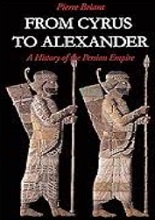
برای دانلود این کتاب، ابتدا باید عضو سایت بشوید.
پس از عضویت، لینک دانلود این کتاب و همهی کتابهای سایت برای شما فعال میشوند.
(قبلا عضو شدهاید؟ وارد شوید)
